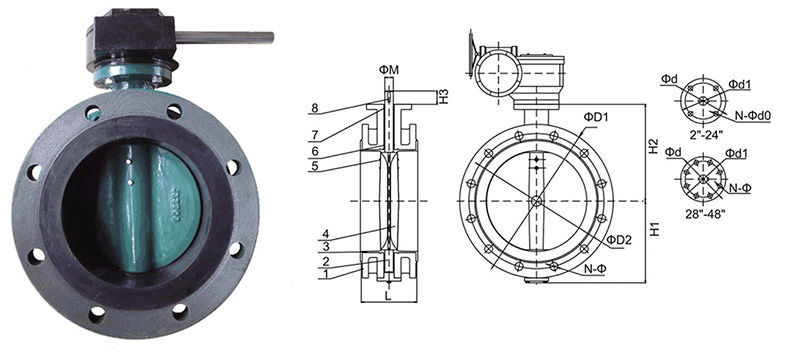Nov . 27, 2024 05:23 Back to list
Understanding the Functionality of Lined Check Valves for Fluid Control Systems
Understanding Lined Check Valves Applications and Benefits
In various industrial applications, ensuring the integrity of fluid and gas systems is paramount. Among the crucial components that facilitate this are check valves, specifically lined check valves. These specialized valves are designed to prevent backflow in piping systems, safeguarding equipment from potential damage and ensuring efficient operation.
What is a Lined Check Valve?
A lined check valve is essentially a one-way valve that allows flow in one direction while preventing backflow. The term lined refers to the inner membrane or lining that is applied to the valve body, typically made from materials such as PTFE (Polytetrafluoroethylene) or various elastomers. This lining provides additional protection against corrosion, wear, and chemical attack, which is critical in processes where aggressive fluids are involved.
Why Use Lined Check Valves?
1. Corrosion Resistance One of the main reasons industries opt for lined check valves is the need for high resistance against corrosive substances. Many chemicals can degrade standard valve materials, leading to leaks or failure. The protective lining ensures that the valve can withstand exposure to harsh chemicals, extending its lifecycle and reducing replacement costs.
2. Durability Lined check valves are also engineered for high durability. The lining material can absorb impacts and resist extreme temperatures, making it suitable for various environments – from chemical processing plants to water treatment facilities.
3. Prevention of Contamination In industries where the purity of the material is vital (such as pharmaceuticals or food processing), lined check valves prevent cross-contamination by ensuring that only the intended material flows through the system. This is critical for maintaining product quality and compliance with health standards.
Applications of Lined Check Valves
lined check valve

Lined check valves find numerous applications across different sectors, including
- Chemical Industry These valves are extensively used in the chemical industry to manage the flow of corrosive materials safely. Chemical processing units use lined check valves to handle acids, solvents, and other hazardous materials.
- Oil and Gas In oil and gas applications, lined check valves help prevent backflow in pipelines that transport crude oil, natural gas, and refined products. The need for safety and environmental considerations makes these valves a preferred choice.
- Water Treatment In water treatment plants, lined check valves are utilized to prevent backflow in various stages of treatment, ensuring that clean water remains uncontaminated.
- Pharmaceuticals and Food Processing The lining provides the necessary protection against chemical reactions that can compromise product integrity. This makes them crucial in facilities where maintaining sanitary conditions is important.
Installation and Maintenance
Installing inline check valves requires careful consideration of fluid dynamics and the specific requirements of the system. Proper installation ensures that the valve operates effectively and reduces the risk of backflow. Maintenance is also essential; while lined check valves are designed to be durable, regular inspections should be conducted to check for wear on the lining, leaks, or other signs of failure.
Conclusion
In summary, lined check valves are essential components in many industrial applications, providing robust solutions to prevent backflow while protecting against corrosion and contamination. Their durability, coupled with their ability to withstand harsh chemicals, makes them invaluable across a range of sectors, including chemicals, oil and gas, water treatment, pharmaceuticals, and food processing. As industries continue to prioritize safety and efficiency, the role of lined check valves will only become more significant, ensuring smooth operations and protection against potential setbacks. Understanding the advantages and applications of these valves can help organizations make informed decisions when designing or upgrading their fluid and gas systems.
Share
-
Reliable Wafer Type Butterfly Valves for Every IndustryNewsJul.25,2025
-
Reliable Flow Control Begins with the Right Ball Check ValveNewsJul.25,2025
-
Precision Flow Control Starts with Quality ValvesNewsJul.25,2025
-
Industrial Flow Control ReliabilityNewsJul.25,2025
-
Engineered for Efficiency Gate Valves That Power Industrial PerformanceNewsJul.25,2025
-
Empowering Infrastructure Through Quality ManufacturingNewsJul.25,2025